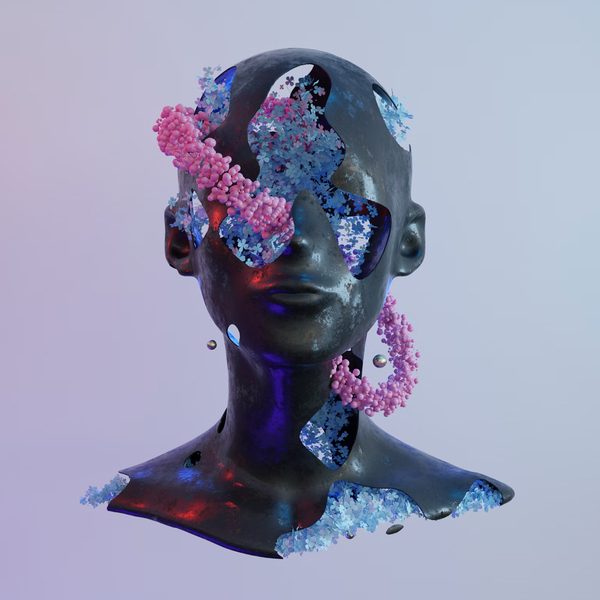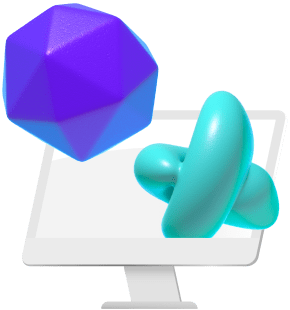If NFT was the word of the year for 2021, Metaverse will in all likelihood be the one we will hear most often in 2022. In fact, many companies are already competing to try to understand its potential and make the most of it.
The choice of big companies in wanting to invest in these spaces is the result of careful market strategies because if it is true that the economy is not yet stable, the possibilities it offers seem to be unlimited.
For the moment we have seen exhibitions on digital catwalks, exhibitions of works of digital art in virtual museums, concerts with thousands and sometimes millions of spectators, but recently the world of design has also started to take its steps in these Metaverses, often with great results.

Photo by julien Tromeur on Unsplash
What is the Metaverse?
The term Metaverse indicates the next evolutionary stage of the mobile internet, as a parallel digital dimension that is always accessible and open where it’s possible to carry all of one’s virtual assets with you, regardless of the technological platform or device from which it is accessed.
The word Metaverse was born in 1992, it first appeared in the cyberpunk science fiction story “Snow Crash” by Neal Stephenson. In its current sense, the Metaverse today has among its most enthusiastic proponents and supporters Facebook CEO Mark Zuckerberg, who does not hesitate to say that his company will become a Metaverse company within the next five or seven years.
What distinguishes the Metaverse from the current mobile internet is above all the dimension that we could call co-presence, or the ability to feel one’s presence together with that of others within the same digital space. A sort of digital sensory space with three-dimensional depth, different from the flattened 2D digital space in which current technologies and platforms move. In this 3D digital space, users can move freely to experience and explore it, in a way that is more natural and akin to that of our physical experience.
The perception of being together with others in a digital space, therefore, expands the palette of actions, reactions, and ideas that can arise in the interaction with others, felt in digital proximity implemented in the 3D space of the Metaverse. The Metaverse will therefore also be a non-place where you can imagine how you want, the space of infinite possibilities and equal opportunities, which cancels the inequalities induced by distances, social identities, and the limitations of the material physical world. In the Metaverse, thoughts, fantasy and imagination can be transmuted into action free from the limitations of the physical world, giving rise to a sort of augmented ability whose works can be experienced together with other users in the shared space of the Metaverse.
How to Enter the Metaverse
The doors of the Metaverse are open to anyone interested. In fact, no special computer skills are required to enter the Metaverse. Only a few tools are needed to access the Metaverse:
- A computer (or a smartphone)
- An internet connection
- An account on one of the platforms of the Metaverse virtual world
- To make the experience more immersive, it’s also possible to use augmented reality glasses
The Main Platforms for Entering the Metaverse
-
Decentraland is a metaverse virtual reality world created by Ethereum. In this virtual universe, once registered users can create virtual buildings, houses, parks and make others pay for the visit. All virtual elements of Decentraland can be purchased with a cryptocurrency called MANA. Decentraland also hosted a music festival with Paris Hilton. Entering the Decentraland Metaverse is very easy, just go to the site, create an account with your avatar and start exploring.
-
Sandbox is a virtual metaverse that has become popular since it announced its partnership with Meta. Its avatars have a blocky visual style like Minecraft and they can build, own and monetize using NFT and SAND. Sandbox has also partnered with hundreds of brands to create avatars in the virtual world of famous characters such as Snoop Dog and The Walking Dead’s characters. The Sandbox platform is not yet available but while waiting you can visit the site and interact with the community.
-
Stageverse is a new virtual platform for immersive experiences. It debuted with a special The Muse concert and allows users to attend concerts through 360° 3D footage and special effects. It can be accessed through the Oculus Quest app for iOS and Android devices.
Metaverse Applications for Creatives
Will the Metaverse and virtual reality be a neutral environment, as the web is (at least in its fundamentals)? Will it be able to welcome everything without making a selection at the source? Difficult to predict, but for sure the Metaverse itself is the work of creatives. The fortune of virtual worlds is the adhesion of creatives to the platform, and in doing so, contributing to the construction of things, environments, objects that will make the Metaverse liveable. Undoubtedly, virtual native activities are essentially creative.

Photo by Richard Horvath on Unsplash
When in 2021 the digital artist Beeple created an NFT artwork and put it up for auction, he obtained the astonishing figure of 69 million dollars; that was the start of a new market era without precise rules which seems, however, to allow once again the enhancement of intellectual property and artistic creativity, restoring plausible income prospects to the world of art and culture and its professionals. In fact, if the duplication of creative and artistic productions cannot be prevented in any way, the possibility of marking their uniqueness - and therefore possible ownership - allows them to be commercialized that responds to a logic of value homologous to that of collecting. A modality that restores some form of control to authors, artists, and creatives, especially over the monetization possibilities linked to their activities, decidedly reduced by the practically unlimited and unrestrained reproducibility of digital works and creative productions.
The Metaverse and its total immersive experience will be the new direction in creative communication. Thanks to technologies such as AR and VR, virtual spaces will be increasingly realistic. Precisely designed 3D elements together with animated graphics will completely revolutionize interactivity as we know it creates an even bigger presence through top-quality audiovisual and tactile interaction.
Many designers and architects have also already begun to experiment with these new spaces and their possible uses. On Sandbox: looking at the building map we will realize how all the virtual plots of land are already full, reaching the minimum price of 13,000 dollars; digital spaces for sale have the same needs - or almost - as physical structures, such as efficient design and careful planning of spaces and so on.
Architecture in the Metaverses is becoming more and more important and is often linked to the experience of the user, who within these worlds lives in spaces built with certain objectives, including that of surprising.
One of the most virtuous examples of digital architecture is that of the architect Zaha Hadid, created for the virtual headquarters of the Konig Gallery. The structure offers the visitor the opportunity to admire the digital works through a path free of constraints and rich in sensorial experiences.
What’s the Future of Metaverse?
Design and architecture are just two of the industries that have begun to take their first steps within these worlds; the Metaverse stands as the next technological bet reminiscent of the internet of the nineties. Over the next few years, the Metaverse will disrupt the value creation chain of brands and even the way people socialize, collaborate, and live.
Whether there will be many Metaverses or just one we still don’t know. What we are witnessing is that virtual worlds making up the Metaverses will work just like new societies; societies existing in cyberspace rather than a physical one but with complex economic and political systems, interacting with the physical world creating an increasingly pop culture, which will be immersive and collaborative.




